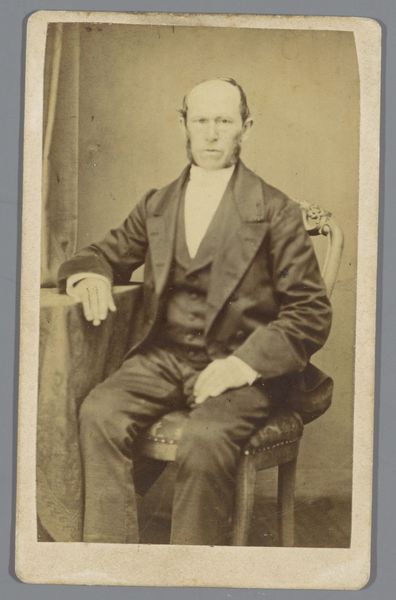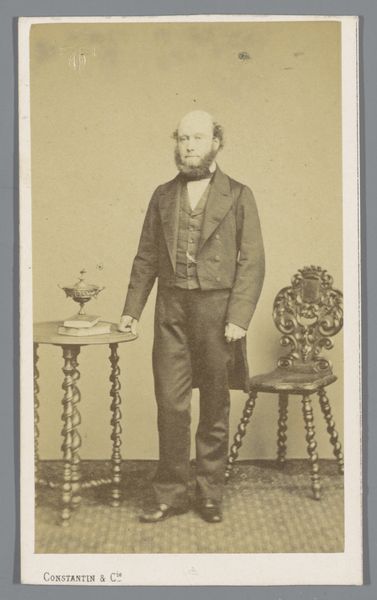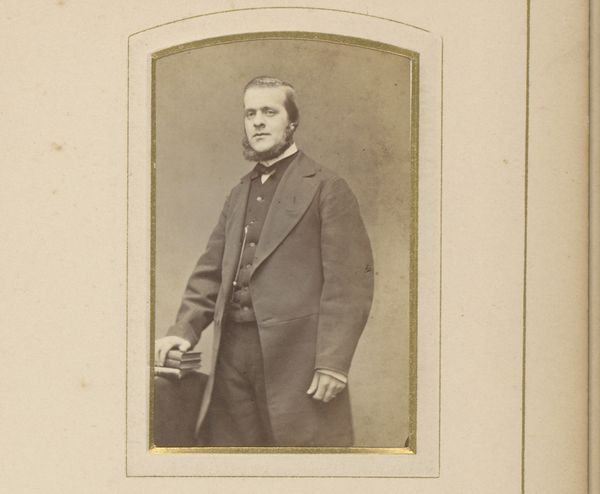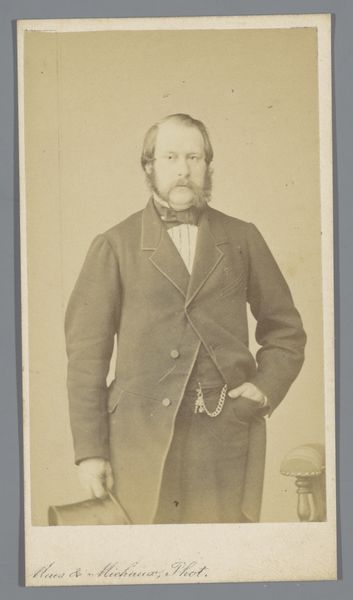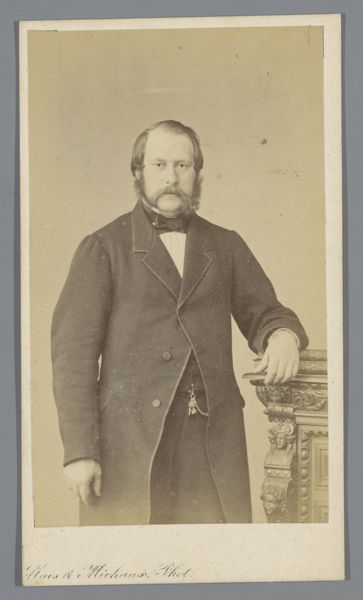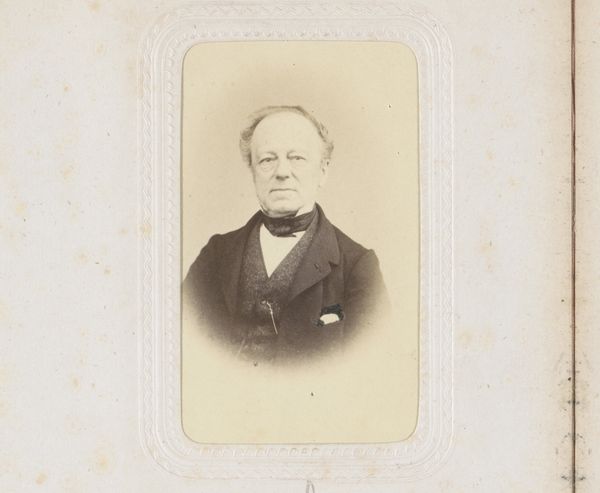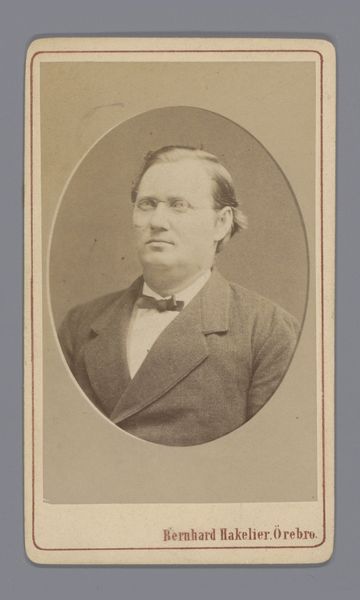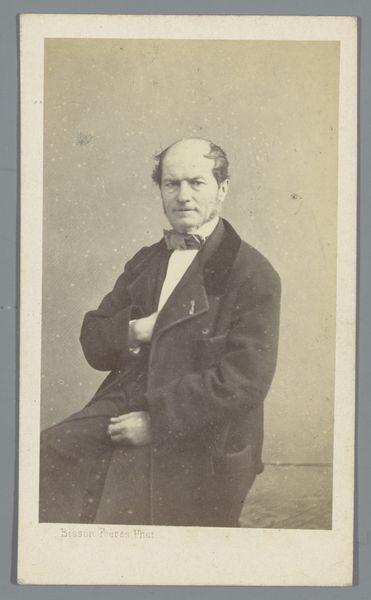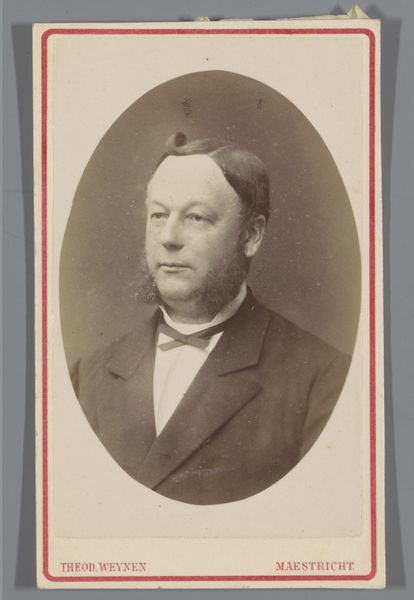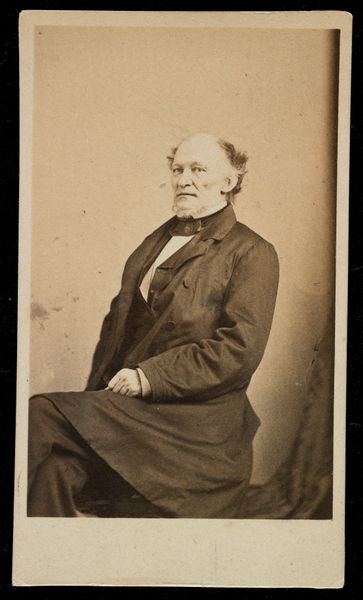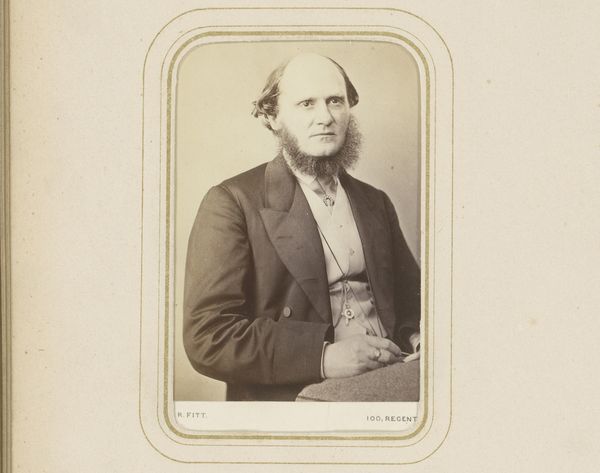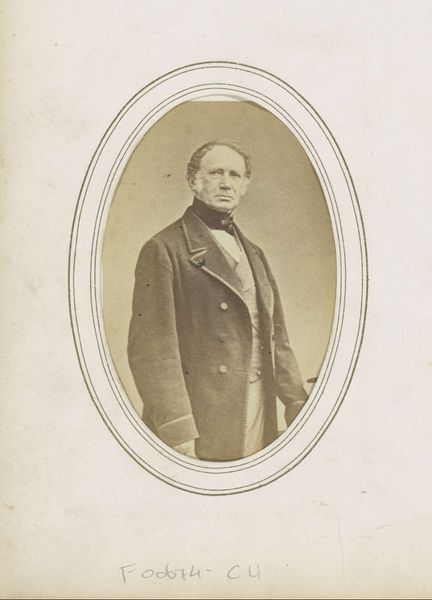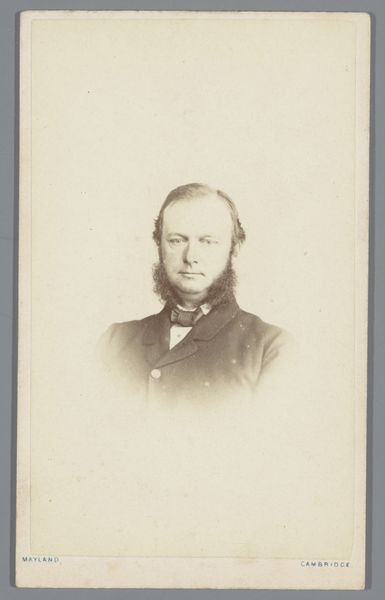
paper, photography, gelatin-silver-print
#
portrait
#
yellowing
#
aged paper
#
yellowing background
#
paper
#
photography
#
gelatin-silver-print
#
paper medium
Dimensions: height 100 mm, width 63 mm
Copyright: Rijks Museum: Open Domain
Editor: Here we have Hendrik Nicolaas Waalewijn's "Portret van een onbekende man met baard," made in 1878. It's a gelatin-silver print, giving it that beautiful sepia tone. It reminds me of old family photos, but this man's stern expression makes me wonder about his story. What strikes you about this piece? Curator: This photograph is fascinating when considered within the context of portraiture's evolving role in the late 19th century. Photography began democratizing portraiture, moving it away from the exclusive realm of the painted elite. Suddenly, the middle class could also commission images of themselves. What social statements were being made by who chose to be photographed, and how? Editor: That’s interesting! So, commissioning a photograph was a way of announcing one's social status? Did everyone do it, or were there still factors limiting access? Curator: Exactly. While photography was becoming more accessible, the act of sitting for a portrait – investing time and money – was still a statement. Looking at this man's clothing, what can we infer about his possible social standing? Moreover, consider where and how such a portrait might have been displayed. Public or private use matters. Editor: I see what you mean. His suit suggests a certain level of respectability, and maybe he intended it to be displayed in his home or perhaps even in a public setting. It's interesting to think of this simple image as a marker of social identity and aspiration. Thanks for this insight! Curator: Precisely! It underscores how even seemingly straightforward images were always embedded in complex social and political frameworks. Looking deeper helps us understand art as more than just aesthetics, but as documents reflecting specific times and values.
Comments
No comments
Be the first to comment and join the conversation on the ultimate creative platform.
